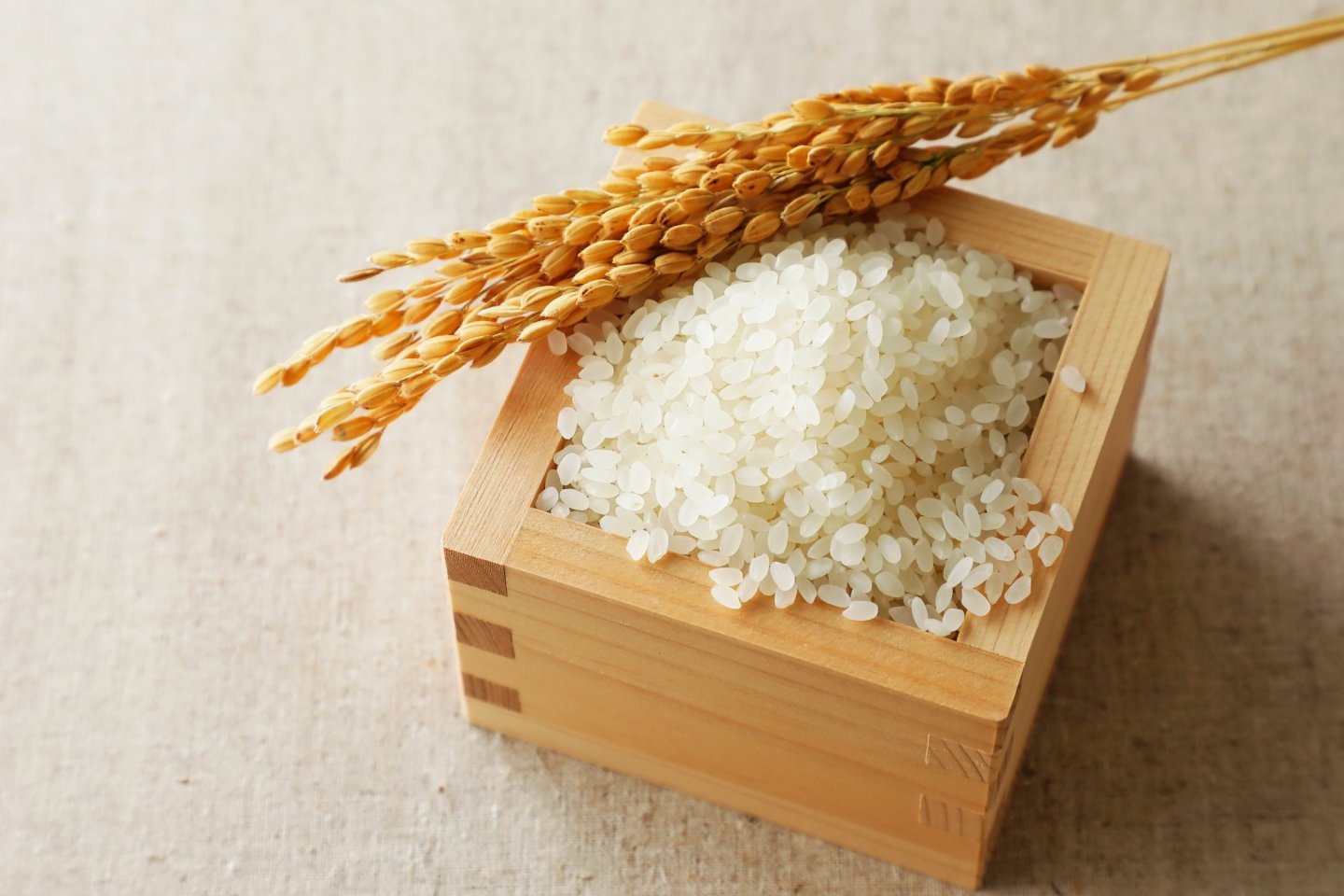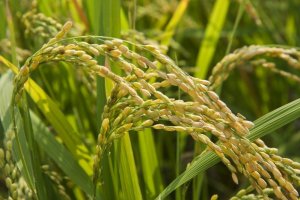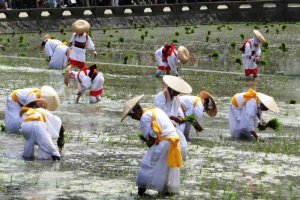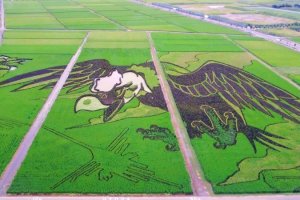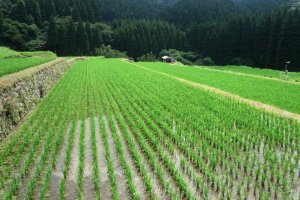Rice has been a staple source of energy for inhabitants of the land we today call Japan for millennia. Recent studies revealed that the first rice fields might have already been in place during the Jōmon period, about 6,000 years ago; while the introduction of rice cultivation about 3,000 years ago during the Yayoi period boosted the development of the Japanese islands.
With the rise to power of the Tokugawa Shogunate and the beginning of Japan’s Edo period, rice became so relevant that it was the center for the whole economy. The koku became a unit of measurement for the amount of rice production and a way to quantify the size of a domain. The larger their rice fields the higher the koku, and therefore the stronger the economy, which in turn led to a mightier military force. Most samurai were also paid in koku and a single koku was said to be enough to feed one person for one year. Larger domains were accounting for land that could produce as much as 1,000,000 koku per year.
During the medieval era to the Edo period, rice was also used as an alternative for money and a type of taxation (Nengumai) in which farmers were required to pay rice as their taxes.

Today the production of rice in Japan has indeed changed and so has its consumption. Today’s Japanese people on average consume half of the rice that they consumed 50 years ago. This is mostly due to the introduction of several international dishes that came along with the modernization of Japan. Despite this big change, Japan still loves its rice and there are many varieties and classifications in place to satisfy every palate. Moreover, there are strong ties that Japanese culture still has with rice, including many dishes and festivals directly connected to rice. Let’s explore the many facets of rice culture.
The seasons and Japanese rice
The four seasons are vital to rice production and where the crop-to-food process begins.
Japanese rice is also produced outside of Japan where it is known as Japonica rice. However, what makes domestic Japanese rice so delicious is due to the four seasons of Japan.
Spring: The long process of rice cultivation in Japan traditionally starts with the arrival of the new year. In spring, fields are prepared to welcome the seedling and the water level needs to be kept high. May and June are the months when rice planting starts in earnest with the blessing of many local festivals held throughout the whole country.
Summer: The warm temperatures and rainy season at the beginning of summer are ideal for rice growth. Continuous control of pests, such as insects or weeds is essential to preserve the integrity of the crops. By the end of the season, the rice fields look tall and strong with a bright emerald green color that is very iconic of this season.
Famous festivals of this season are the Otaue Rice Planting Festival in Osaka (June) and Arao Rice Planting Festival in Kyushu (June).


Autumn: By the time the full heat of summer has died down and fall is in the air, the fields have now turned into golden waves of rice. Finally, harvest season has arrived. First, the water is drained from the paddies to make the rice easier to harvest. Next, a combine is used for rice harvesting. Then, the threshed rice is slowly dried and the hull removed to make brown rice.
Famous festival: Rice Fields Art in the autumn season (Inakadate in Aomori Prefecture)

Winter: Brown rice is carefully polished at factories and then shipped to wholesalers and vendors. The finished product makes its way into Japanese households across Japan. Thanks to the knowledge and experience accumulated by the farmers over centuries of rice cultivation and the distinct four seasons of Japan, rice is consumed nationwide, year-round.
The classification of Japanese rice
Rice is relatively easy to cultivate and can be found all over the world in regions with suitable weather conditions and plentiful rainfall. Japan is an ideal location for rice cultivation and also has its own local rice variant called japonica, which is rounder, thicker, and harder when compared to the longer, thinner, and fluffier indica rice strain from India. Japonica rice is also stickier due to the higher content of amylopectin, making it perfect to be used in dishes such as onigiri (rice balls) or sushi to be eaten with chopsticks.
Strains of rice
Over the centuries, several varieties of Japanese rice have been developed. The most well recognized are the following:
-
Koshihikari (コシヒカリ) The most popular variety of Japanese rice nationally and internationally. This short grain rice has a sticky consistency with a sweet flavor and is grown all over Japan. The Tohoku region in northern Honshu being the main rice production region.
-
Hitomebore (ひとめぼれ) Known for its soft texture that goes well with light Japanese food, it has the right balance of taste, aroma, and appearance. It is sticky and soft like Koshihikari, but not as strong.
-
Akita-komachi (あきたこまち) Originated in Akita Prefecture, this rice was also the inspiration for the homonymous Shinkansen train that passes by Akita. It is slightly less sticky and lighter in taste than Koshihikari. Even when eaten cold, the flavor is not spoiled and therefore is excellent for dishes that are eaten cold such as sushi.
Types of rice

-
Hakumai/Uruchimai (粳米) - The most common and easy to find rice is the white rice used as a main accompaniment for many Japanese dishes.
-
Genmai (玄米) - Brown rice that has not been polished to remove the outer bran is called genmai. This type of rice has not been as popular as white rice due to its longer cooking time and need for more water but it is gaining in popularity in recent years as it possesses more varied nutrients than polished white rice.
-
Mochigome (もち米) – A softer, sweeter type of glutinous rice which is normally used for sweets such as mochi and daifuku. Its high elasticity makes it suitable for pounding and it easily assumes the ideal consistency for mochi.
Grades of rice
Alongside these varieties, rice in Japan is also classified in different rankings. One of the most famous taste rankings by the Japan Grain Inspection Association started in 1971 as a taste sensation evaluation that rates cooked rice on appearance, fragrance, taste, viscosity, and firmness, resulting in one of the following rankings, in order from highest to lowest: Special A, A, A’, B, B’.
These rankings are assigned annually and are taken very seriously by both producers and consumers, with some rice producers having achieved the highest rank for several years in a row.
Rice in Japanese cuisine
In 2014, the traditional Japanese cuisine or washoku was nominated as a UNESCO Intangible Cultural Heritage. This was a huge accomplishment for Japan. We could also say that rice has been recognized as an essential grain in Japanese history because rice is the centerpiece for a majority of national dishes. Let’s have a look at the most popular rice-based dishes of Japanese cuisine:

-
Onigiri おにぎり – One of the most iconic rice-centered foods is a simple rice ball. These are sometimes filled with various ingredients ranging from fish and meat to vegetables and pickles. They are often wrapped with seaweed (nori).
-
Sushi 寿司 – One of the most celebrated Japanese foods. Sushi is made by adding a bed of rice under raw fish (sashimi) or other toppings, such as rolled omelets, vegetables, or meat. Needless to say, sushi has become popular all over the world.
-
-Don 丼 – It refers to a wide range of dishes that have a base of rice in a bowl. Toppings lie upon the bed of rice. Popular toppings are pork cutlet (katsudon), raw fish (kaisendon), beef (gyudon), as well as chicken and half-cooked eggs (oyakodon).
-
Senbei 煎餅 – Rice pressed into a cracker shape and flavored with salty ingredients such as soy sauce, which make it a perfect snack and one of most popular traditional Japanese rice-based foods.
-
Mochi 餅 –The process itself of pounding rice into a mortar with a huge wood hammer is very iconic and brings back scenes from traditional Japan. The chewy and soft rice cakes are then covered with sugar and filled with red bean paste known as anko. Many variations exist but the most common is mochi eaten in association with the Japanese New Year (Shogatsu).
-
Kaminari Okoshi 雷おこし – One of Japan’s traditional sweets. This sweet rice krispies snack is mixed with sugar and syrup. Finally, it is pressed into a flat shape and divided into cubes. See below for a closer look.
Rice has also been used for beverages and other products throughout the centuries:

-
Sake 酒 – Once upon a time, this was the only alcoholic beverage consumed in Japan. Today, it’s still seen with high regard despite the presence of imported beverages. The first step of sake production involves creating a mixture of steamed rice, water, and koji yeast mold. This process is repeated two more times on the 3rd and 4th days. After that, it can take six weeks or more for fermentation to finish; the sake is then stored for nine to twelve months to fill out its flavor profile. Special brewing rice, sakamai, is used for sake making; this type of rice has a more fruity taste when polished (Daiginjo refers to sake made from sakamai that has been polished by 50% or more). The variety of sake and individual flavor profiles are determined by what type of rice, koji yeast mold, water, rice-polishing ratio, brewing method, and refining method are used throughout the process. Today, sake has become a common word throughout the world. It has a rich, fruity, and delicate flavor that attracts the taste buds of many people around the world.
-
Rice Straw Products – Once harvested what is left of rice plants is used to create utensils or commodities such as sandals, baskets, and even traditional rice baskets (koku). Rice straw cords known as shimenawa are found at every Shinto shrine or attached to important natural heritages are used to indicate the border of a sacred area.

Kaminari Okoshi: Asakusa’s specialty rice snack

In case you would like to get a hands-on experience related to Japanese rice right in the center of Tokyo, it’s time to become more familiar with Kaminari Okoshi.
A favorite snack among Japanese people for centuries, it represents the essence of washoku itself. It’s a sweet rice krispies snack mixed with sugar and syrup, which is then pressed into a flat shape and divided into cubes.
Just a few minutes from Senso-ji Temple is a building known as an institution of the Asakusa area: the main shop selling Kaminari Okoshi sweets, the 5656 Building. Within this building is an area where visitors can learn more about this traditional Japanese sweet and also make it themselves!
Make your own Kaminari Okoshi

Preparing Kaminari Okoshi is quite simple as it only requires five ingredients: The rice itself, syrup, margarine, and a main flavor from three choices (white sugar, black sugar, or caramel). Depending on the main flavor, peanuts or other ingredients can be added. Initially, the main flavor is mixed and stirred with the syrup and margarine in a pan over fire. By mixing and stirring you avoid burning your precious sweets. Once it begins boiling, add the rice and keep mixing to reach a very homogenous texture.
When the main body for the Kaminari Okoshi is finished, place the whole mixture onto a flat square surface and spread it even as you would do with a pizza. Once that even surface is obtained, it can be cut with the aid of a press with linear rigs on it. After the mixture has been cut horizontally and vertically you will obtain the traditional cubic shape of the sweets that have been a Japanese favorite for centuries!

Find out more about Kaminari Okoshi
